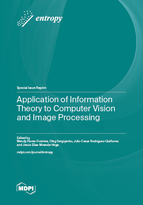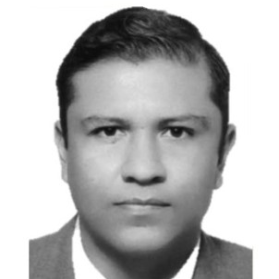Application of Information Theory to Computer Vision and Image Processing
A special issue of Entropy (ISSN 1099-4300). This special issue belongs to the section "Information Theory, Probability and Statistics".
Deadline for manuscript submissions: closed (3 July 2023) | Viewed by 18422
Special Issue Editors
Interests: optics; structural health monitoring; machine vision; remote sensing; support vector machine; measurement error; mobile robotics
Special Issues, Collections and Topics in MDPI journals
Interests: automated metrology; 3D coordinates measurement; robotic navigation; machine vision; simulation of the robotic swarms behaviour
Special Issues, Collections and Topics in MDPI journals
Interests: machine vision; stereo vision; systems laser; scanner control; digital image processing
Special Issues, Collections and Topics in MDPI journals
Interests: machine vision; stereo vision; systems laser; scanner control; analogic and digital processing
Special Issues, Collections and Topics in MDPI journals
Special Issue Information
Dear Colleagues,
World perception is the product of complex optical and physical processes of the human visual system, allowing light stimuli to penetrate through the pupils to reach the retina composed of photoreceptors that transform light into electrochemical energy, which can then be transmitted to the brain to organize, interpret, and analyze the information received and create a perceived reality. In a similar optical and physical process, machine vision is the eyes of cybernetic systems for joining the virtual and real world to coexist in human lives, looking to integrate this technology into our daily lives with creativity and globalization view through interconnectivity. This is possible due to the advanced technologies of sensors and systems to acquire and compute information. Such tasks are based on the integration of optoelectronics devices for sensors and cameras. Sensors, artificial intelligence algorithms, embedded systems, robust control, inertial navigation systems, robotics, interconnectivity, Big Data, information interchange within robotic swarms, and cloud computing form the basis of machine vision developments for cyber-physical systems to collaborate with humans and their real and virtual environments and activities.
This Special Issue aims to publish information theory, measurement methods, data processing, tools, and techniques for the design and instrumentation used in machine vision systems via the application of computer vision and image processing.
Dr. Wendy Flores-Fuentes
Dr. Oleg Sergiyenko
Dr. Julio Cesar Rodriguez-Quinonez
Dr. Jesús Elías Miranda-Vega
Guest Editors
Manuscript Submission Information
Manuscripts should be submitted online at www.mdpi.com by registering and logging in to this website. Once you are registered, click here to go to the submission form. Manuscripts can be submitted until the deadline. All submissions that pass pre-check are peer-reviewed. Accepted papers will be published continuously in the journal (as soon as accepted) and will be listed together on the special issue website. Research articles, review articles as well as short communications are invited. For planned papers, a title and short abstract (about 100 words) can be sent to the Editorial Office for announcement on this website.
Submitted manuscripts should not have been published previously, nor be under consideration for publication elsewhere (except conference proceedings papers). All manuscripts are thoroughly refereed through a single-blind peer-review process. A guide for authors and other relevant information for submission of manuscripts is available on the Instructions for Authors page. Entropy is an international peer-reviewed open access monthly journal published by MDPI.
Please visit the Instructions for Authors page before submitting a manuscript. The Article Processing Charge (APC) for publication in this open access journal is 2600 CHF (Swiss Francs). Submitted papers should be well formatted and use good English. Authors may use MDPI's English editing service prior to publication or during author revisions.
Keywords
- machine vision
- cyber-physical systems
- navigation
- 3D spatial coordinates
- information theory applications
- data interchange
- instrumentation
- measurements
- artificial intelligence
- signal and image processing










